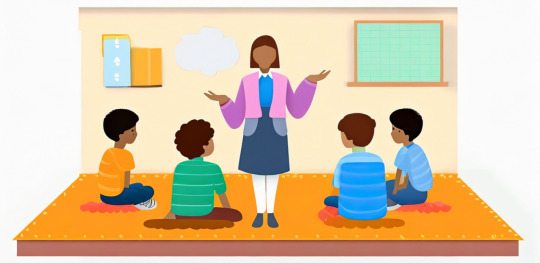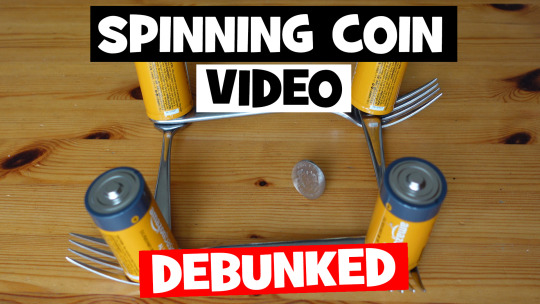Text
STEM Calendar 2024
Science-related days in 2024 in the UK to help with lesson and assembly planning.
National and World days.
See here for more

View On WordPress
0 notes
Text
Year 3: Science Lesson Starter Presentation Bundle
This bundle contains lesson starter presentations for the modules in year 3 Science.
Includes question slides, odd-one-out discussion starters and anagram games. Ideal at the start of a lesson to recap prior learning. Could be used as a plenary too.
There’s one presentation for each of the 5 units:
Plants
Rocks and Soils
Light and Shadows
Animals inc Humans
Forces and Magnets
Answers are on the…

View On WordPress
0 notes
Text
10 Ideas for Teaching States of Matter
This pdf booklet contains 10 ideas for teaching States of Matter to year 4.
Includes:
5 detailed ideas
5 quick ideas
Resource ideas for teaching the topic.
Free
View On WordPress
0 notes
Text
Using AI in Primary Science Teaching
There has been a rapid proliferation of Generative AI tools such as Chat GPT, Microsoft Copilot, Google Bard and more. There is an emerging market in educational-focused AI tools which claim to be able to plan lessons, write reports and more. Generative AI refers to technology that creates new content—like images, text, or music—by learning patterns from existing data and generating novel…

View On WordPress
#ai#ai in science#ai lesson planning#artificial intelligence#teachmate#using chat gpt for lesson planning
0 notes
Text
Why is Pluto not a Planet? What are dwarf planets?
Before 2006, defining what counted as a planet was more of a loose concept than a concrete rule. Since ancient times, humans have observed these bright, wandering objects in the sky. The term ‘planet’ itself originates from the Greek for ‘Wandering Star,’ used to describe these distinct celestial bodies.
We knew about Mercury, Venus, Mars, Jupiter, and Saturn for centuries. With better…

View On WordPress
#earth in space#solar system facts#teaching space#what are dwarf planets#what are the 8 planets#why is pluto not a planet#why was pluto demoted
0 notes
Text
Why is the Axis of The Earth Tilted?
Today, we’re going to take a look into one of the big mysteries of our planet: Why is Earth tilted on its axis, and how is it linked to the formation of the moon? Let’s find out.
Unlike a perfect spinning top, Earth doesn’t spin straight up and down. Instead, it’s tilted at a slight angle. This angle is approximately 23.5 degrees relative to its orbit around the Sun.
But what caused our planet…

View On WordPress
#axis#how did the moon form?#science#seasons#why is the axis of the earth tilted#why is the earth tilted#why is the earths axis tilted
0 notes
Text
Festive Christmas Science Investigations
Here are some ideas for festive science investigations that you could try with a class or at home.
What material makes the strongest paper chain?
You’ll need
Different paper / card
Sellotape or glue sticks
Forcemeters or weights
Ask the children to make paper chains using different materials – such as tissue paper, sugar paper, aluminium foil, wrapping paper.
Make two or three link chains…

View On WordPress
#christmas science#festive science#flying santa hats#ks2#Physics#practical#practical science#science#science investigations#stem
0 notes
Text
Where does the mass of a plant come from?
Ever wondered where a huge tree gets its weight from? Just like we grow from the food we eat, trees also have a source for their mass. But where does it come from? Is it the soil, the water, or maybe the air?
Long ago, people thought plants got their weight by taking in minerals from the soil. But in the 1630s, a scientist named Jan Baptist van Helmont did an experiment to find out.
He planted…

View On WordPress
0 notes
Text
Cognitive Theory and Primary Science Teaching
Cognitive science is gaining increasing influence in education and many existing and developing educational approaches are described as ‘inspired by cognitive science’. Many of these approaches have been long practiced or described as effective pedagogy without any reference to cognitive science – for example, quizzing pupils on topics has been common even without this being thought of as a form…

View On WordPress
#chunking science#cognitive load#cognitive science#cognitive theory#cogsci#learning theory#retrieval practice#science theory#stem
0 notes
Text
Virtual Field Trips in Primary Science
There are many occasions when it would be brilliant to whisk your class away to see the tortoises on the Galapagos islands, or to dive the Great Barrier Reef. But sadly that’s not going to be possible. But using technology you can take them on a virtual field trip, travelling to other places without actually leaving the classroom. Your interactive whiteboard or screen can become a window on the…

View On WordPress
0 notes
Text
Improving Primary Science Guidance Report: A Summary
This week the Education Endowment Foundation have released its new ‘Improving Primary Science’ guidance report . This report makes several recommendations on ways primary schools can improve the teaching of science.
These recommendations are:
Develop pupil’s scientific vocabulary
Encourage pupils to explain their thinking whether verbally or in written form
Guide pupils to work…

View On WordPress
0 notes
Text
EEF: Improving Primary Science Guidance Report
This week The Education Endowment Foundation have released its new ‘Improving Primary Science’ guidance report .The EEF say, ‘High-quality primary science teaching builds pupils’ curiosity and critical thinking, helping them to build a coherent understanding of the world around them. It’s also crucial from a social mobility point of view, opening children’s minds to the opportunities they could…

View On WordPress
#eef science report#help for science leaders#how to teach science better#improving science#primary science improvement#science guidance#science report#stem teaching
0 notes
Text
What Happens When You Ask AI to Draw a Scientist?
What does a scientist look like? In the media, scientists are stereotypically shown as white and male. There is a famous experiment where you ask a class of children to draw a scientist to see how common this stereotype is. In the 60’s and 70’s only 1% of students draw scientists as female (According to Science.org), but increasingly children are drawing more female scientist, and in some studies…

View On WordPress
#ai bias#ai prompt#diversity#gender in science#science stereotypes#what does a scientist look like#what is a scientist#what is science#white coats in science
0 notes
Text
Explorify Launch "Start with Art" Resources
Explorify have just launched a new type of lesson activity, bringing together both Science and Art. Start with Art provides lesson resources that can be used to look for links between art and science, and the responses can be used to draw out any misconceptions the children may have.
Start with Art provides a series of resources that combine science with art. Each resource comes with questions…

View On WordPress
0 notes
Text
Integrating Computing into Primary Science
Presenting Science and ICT (“Digital Storytelling”)
Put simply, “digital storytelling” is just using computer-based tools to tell a story. There are many different ways to do this – from making movies, recording voices, creating animations or electronic books.In science, technology can help to take a mundane task – such as writing a report, explaining a process or describing an experiment – and…

View On WordPress
#computing#datalogging#datalogging in primary science#digital storytelling#ICT#ict in science#it#ks2 science#steam and computing#stem and computing#technology and science
0 notes
Text
Debunking the Spinning Coin Video: Being a Classroom Mythbuster
Viral videos have become an integral part of our social media landscape, capturing our attention with incredible tricks and experiments. However, it’s essential to teach students that not everything they see online is true. As educators, we have a unique opportunity to turn these captivating yet deceptive videos into valuable teaching moments. In this blog post, we’ll explore how we can use one…

View On WordPress
0 notes
Text
Models and Analogies For Teaching Electricity
What is actually going on inside a circuit? It’s impossible to see, and to explain it properly uses concepts way above primary school level. So how can we explain it? Time for a model!
Electricity is an abstract idea. We can see its effect on something like a light bulb, but it is very hard to understand what is happening inside a circuit.
To help understand what is going on, we need to use…

View On WordPress
0 notes